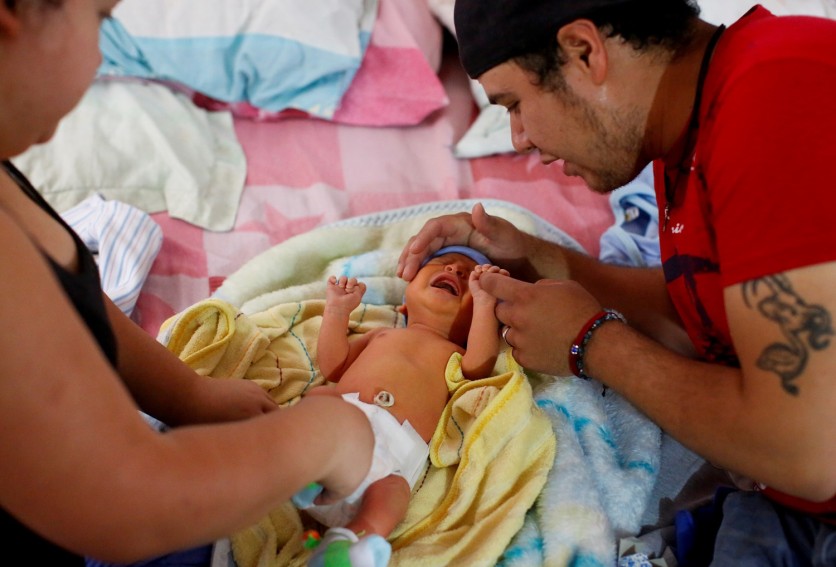Brain imaging has revealed the impact of the coronavirus on pediatric inflammatory multisystem syndrome (PIMS) patients. Researchers have identified the same neurologic findings in adult COVID-19 cases.
University College London Doctor Yael Hacohen and colleagues in JAMA Neurology have seen new-onset neurological symptoms in 4 among 27 PIMS cases, MedPage Today reported.
While all four children had encephalopathy and global muscle weakness, other symptoms like headache, brainstem signs with dysarthria or dysphagia, reduced reflexes, meningism, and cerebellar ataxia arose, but not in all of them.

"We have heard and seen of the lethargy, headache and confusion as part of the presenting symptom complex in many patients," said Dr. Kevin Friedman who works at the Boston Children's Hospital, adding that those findings affirm their theories.
As published in the New England Journal of Medicine on Tuesday, June 30, the COVID-19 study reported that neurologic involvement in cases was seen in 5% in children 12 years old and younger, and 11% in those aged 13 to 20 who are among the 186 cases in 26 states examined. This was based on the CDC's narrower criteria for multiorgan inflammatory syndrome in children (MIS-C).
On May 10, neurologic symptoms (predominantly headaches) emerged among 13% of 5-year-old and younger patients and 38% of those aged between 13 and 20. These are among the 99 MIS-C cases reported to the New York State Department of Health active mandatory survey.
Kid's meeting MISC-C criteria could just be the "tip of the iceberg"
"Overall, a consistent clinical picture is emerging," Dr. Michael Levin of the Imperial College London wrote in a supplementary editorial. He also said that children showing MIS-C diagnostic symptoms may just be the "tip of the iceberg."
A Chinese study on adult patients recorded neurologic findings in 36.4% of patients, which include dizziness, headache, ataxia, impaired consciousness, seizures, and acute cerebrovascular disease.

Meanwhile, the London study may be first to describe brain imaging in such children.
Images of the brain showed signal changes in the splenium of the corpus callosum (SCC) region of the brain among four PIMS patients. Also, T2-hyperintense lesions associated with restricted diffusion were seen in three patients while the fourth one had a splenial lesion on CT, but not with restricted diffusion as subsequent MRI confirmed.
The researchers also wrote in their report that SCC reversible lesions "are rare but have been previously reported in patients with encephalopathies." These are also believed to signify "focal intramyelin edema secondary to inflammation."
Children with Kawasaki Disease
They added that children with Kawasaki disease, which overlaps with PIMS or MIS-C, were also seen to have a transient lesion in the SCC, "either in isolation or with more extensive brain involvement."
The neuroimaging has also shown other viral infections. This prompts Hacohen-led researchers to suggest that "clinicians should be adding SARS-CoV-2 to their differential diagnosis for children presenting with new neurologic symptoms" while they explore other possible causes.
Researchers also said SARS-CoV-2 should also be studied among children who present primary neurologic symptoms without systemic involvement. This is due to a growing number of children who carry COVID-19 infection without any symptoms.
"Most patients are returning to normal mental status and having resolution of headache fairly quickly after treatment, but long-term follow-up will be needed to see if there are ongoing implications," said Kevin Friedman, a member of the American Heart Association's Young Hearts Council as well as the Rheumatic Fever, Endocarditis, and Kawasaki Disease Committee.
While children with self-healing inflammation were unseen in MIS-C, they may still be at risk for aneurysms, this requires further surveillance of PIMS cases that meet MIS-C criteria, but also those with unexplained fever and inflammation.
Read also: COVID-19: Researchers Believe T-Cells Hold the Key to Coronavirus Immunity and Exposure to Common Cold Could Help
ⓒ 2025 TECHTIMES.com All rights reserved. Do not reproduce without permission.




